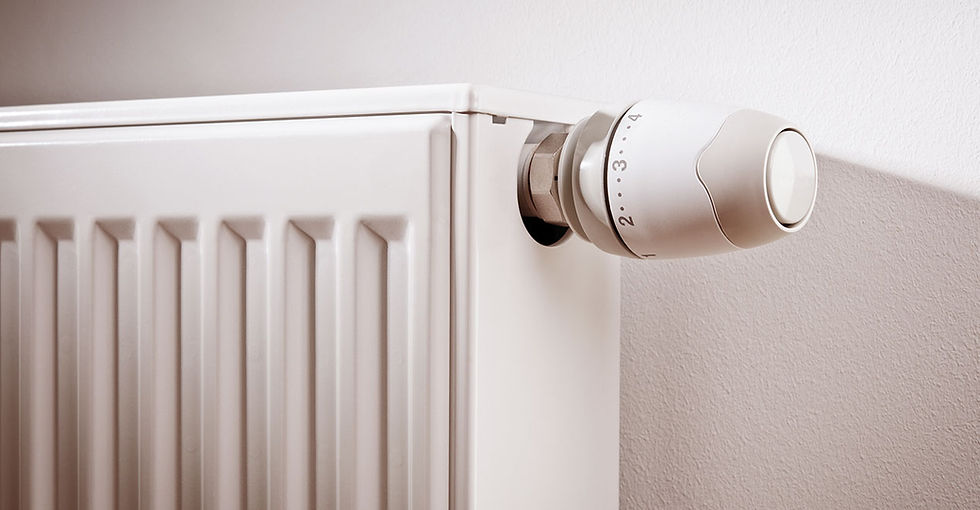Common HVAC Problems in Older Homes and How to Address Them
- Van Bremen's Heat & Air

- Feb 3
- 3 min read
Older homes, while full of charm and character, can present unique challenges when it comes to heating and cooling. Many HVAC systems in older homes were not designed to meet modern efficiency standards, leading to common issues that homeowners may face. Fortunately, with the right knowledge and approach, these problems can be addressed to ensure your home remains comfortable year-round.

1. Inefficient Ductwork
As homes age, the ductwork can become outdated or damaged. Leaky ducts can lead to a significant loss of energy, making it harder to heat or cool your home effectively. Poorly insulated ducts can also result in hot or cold spots within your living spaces.
Solution: If you notice uneven temperatures throughout your home, it may be time to inspect your ductwork. Have a professional assess the ducts for any leaks, gaps, or insulation issues. Sealing and insulating the ducts can significantly improve energy efficiency and indoor comfort.
2. Outdated Thermostat
Older homes often still feature manual thermostats that lack the precision and features of modern programmable thermostats. These outdated systems can lead to temperature fluctuations, wasted energy, and higher utility bills.
Solution: Upgrading to a smart thermostat is an easy and effective way to improve your HVAC system’s efficiency. Modern thermostats allow you to set schedules, control your system remotely, and even monitor your energy usage. This helps you save on heating and cooling costs while maintaining a comfortable temperature.

3. Lack of Proper Insulation
In older homes, insulation may not be up to modern standards, making it difficult to retain heat in the winter or cool air in the summer. Poor insulation can cause your HVAC system to work overtime, leading to higher energy bills.
Solution: Have your home’s insulation inspected, particularly in the attic, walls, and around windows and doors. Proper insulation helps maintain a consistent indoor temperature and reduces the workload on your HVAC system. Adding or upgrading insulation can be a cost-effective way to improve your home’s energy efficiency.
4. Old HVAC Units
Older HVAC units can be inefficient, unreliable, and more prone to breakdowns. If your system is more than 10 years old, it may be time to consider replacing it with a more energy-efficient model.
Solution: Investing in a new HVAC system designed to meet modern energy standards can significantly improve your home’s comfort and efficiency. A professional HVAC technician can help you select a system that fits your home’s size and needs.

5. Inadequate Airflow
Older homes often have smaller, less efficient vents and registers. This can lead to poor airflow, causing rooms to feel stuffy or unevenly heated or cooled. Limited airflow can put unnecessary strain on your HVAC system, reducing its lifespan.
Solution: Ensure your vents and registers are clean and unobstructed. If airflow issues persist, it may be time to consider upgrading your system’s ductwork or adding additional vents to improve airflow and overall system efficiency.
6. Clogged Air Filters
Clogged air filters are a common issue in homes of any age. If your HVAC system’s air filter is clogged, it can strain the system, leading to reduced efficiency and potential damage. This issue is especially common in older homes with aging or poorly maintained HVAC systems.
Solution: Regularly replace or clean your air filters to maintain good airflow and prevent dust buildup. This simple maintenance step ensures that your HVAC system runs smoothly and efficiently.

7. Uneven Temperature Distribution
If you notice that certain rooms in your older home are much warmer or cooler than others, it may be due to poor airflow, outdated ductwork, or an imbalanced HVAC system. This issue can make your home uncomfortable and increase your energy consumption.
Solution: Having a professional HVAC technician assess your system can help identify the cause of the imbalance. They may recommend solutions like adding ductwork, adjusting the airflow, or installing a zoning system to ensure even temperature distribution throughout your home.
8. System Age and Wear
As HVAC systems age, wear and tear can lead to frequent breakdowns, requiring costly repairs. If your system is showing signs of age, it may be more cost-effective to replace it with a new, energy-efficient model.
Solution: Regular maintenance and timely repairs can extend the life of your HVAC system. However, if your system is older and frequently breaking down, it may be time to consider a replacement. Modern units offer improved efficiency, reliability, and comfort.

Conclusion
Older homes often require more attention when it comes to HVAC maintenance and upgrades. By addressing common problems such as inefficient ductwork, outdated thermostats, and poor insulation, you can ensure that your home stays comfortable year-round while saving on energy costs.
If you're facing HVAC issues in your older home, contact Van Bremen’s Heat & Air today. Our experts are here to help diagnose and resolve any problems, ensuring your home is as efficient and comfortable as possible.




Comments